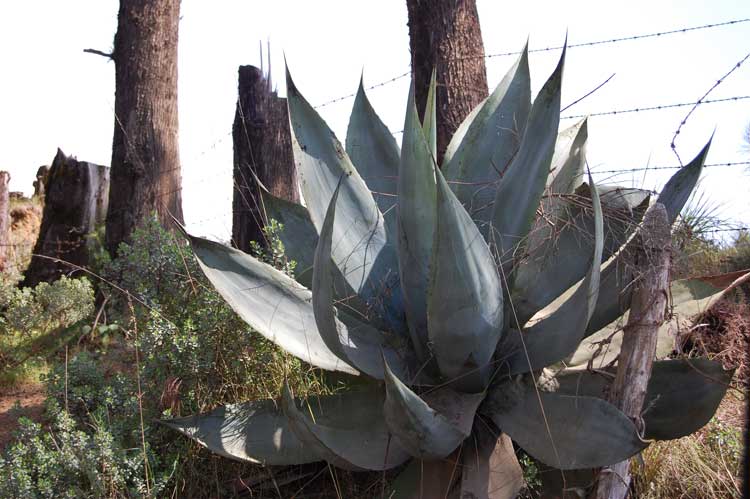
Will the real Agave atrovirens var. mirabilis please step forward?
Agave atrovirens var mirabilis
Here are some pictures of Agave atrovirens var mirabilis taken at the type location of Las Vigas in Veracruz. This isn't a 'wild' population as such, mainly cultivated plants along hedgelines or property boundaries, with some escapees.

Above - I think the plant on the left is Agave salmiana - both species are present in town and can be seen together in the boundary hedges.
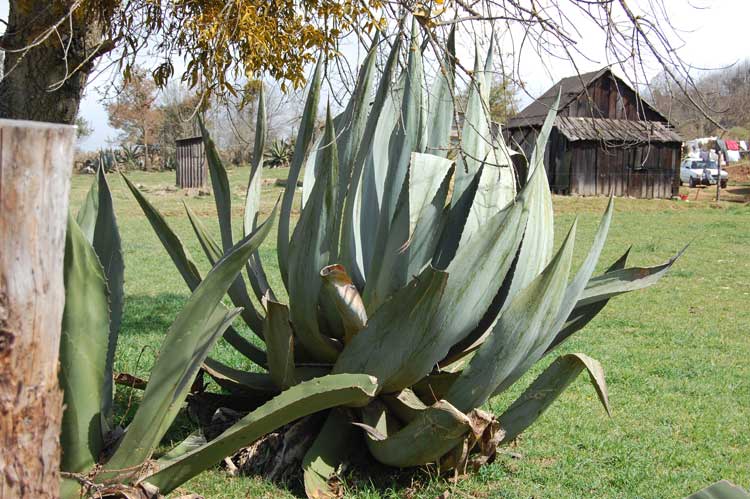
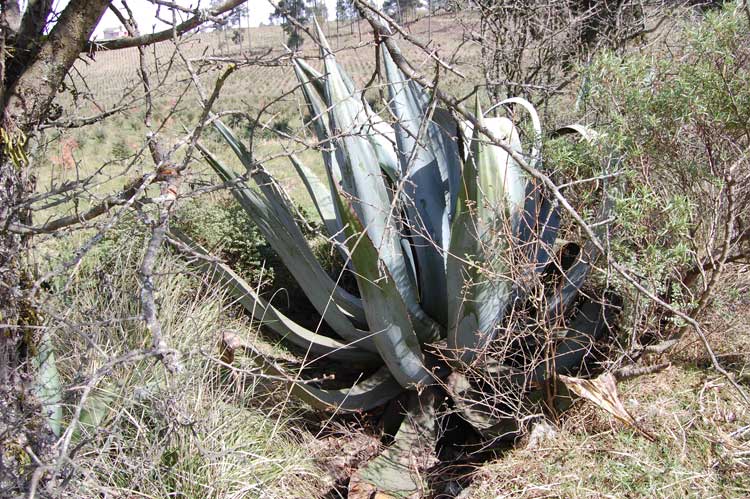
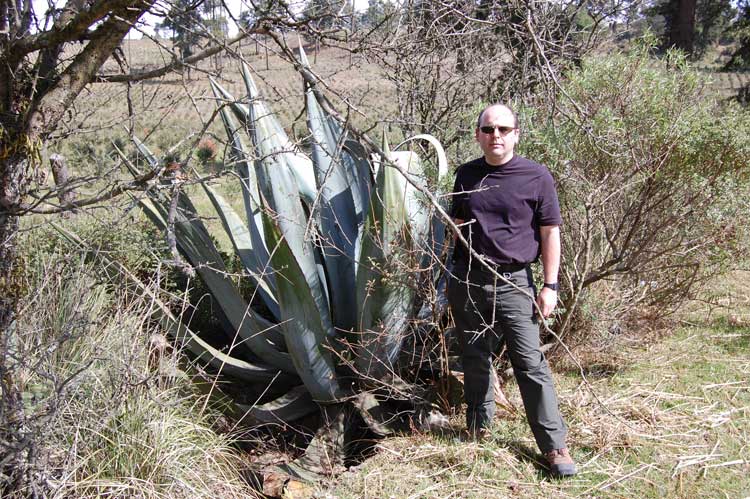
Below - about as big as it gets:
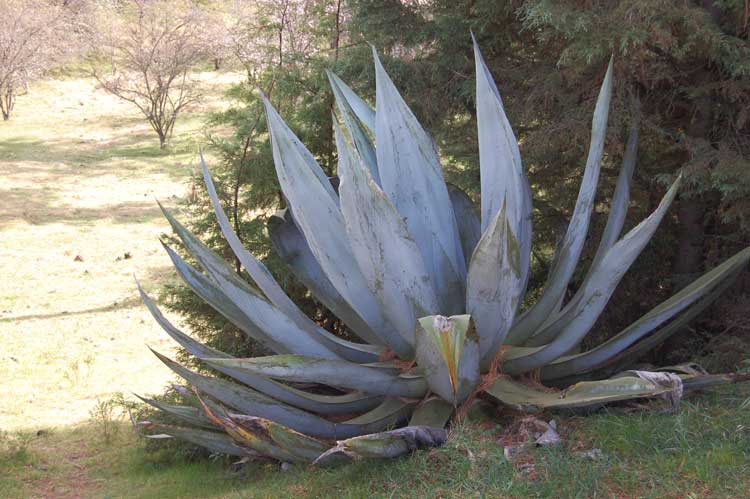
Here same plant with Neil for scale - he is 6'3"
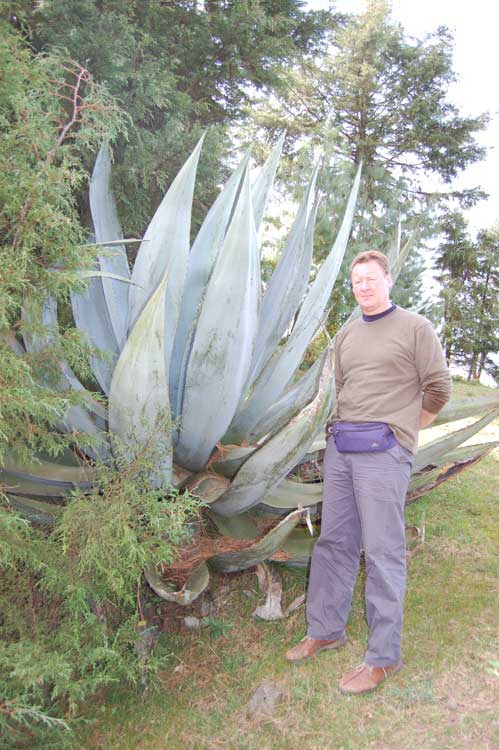
This scruffy individual is preparing to flower
Couple of shots from a visit 2 years before:
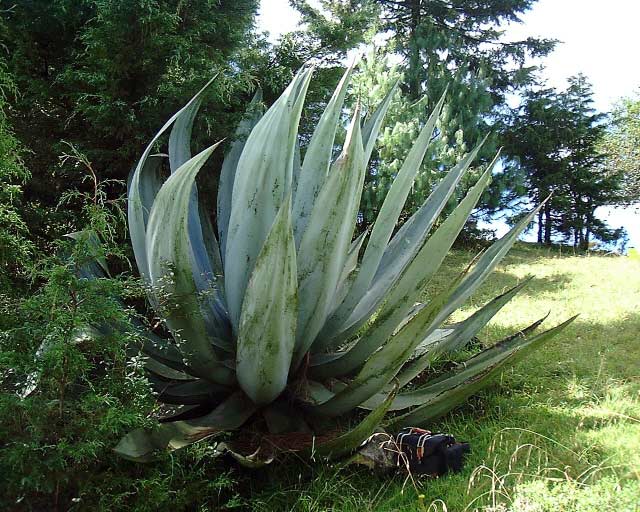
Below that's me, BTW, looking pleased with myself at finding the plant.
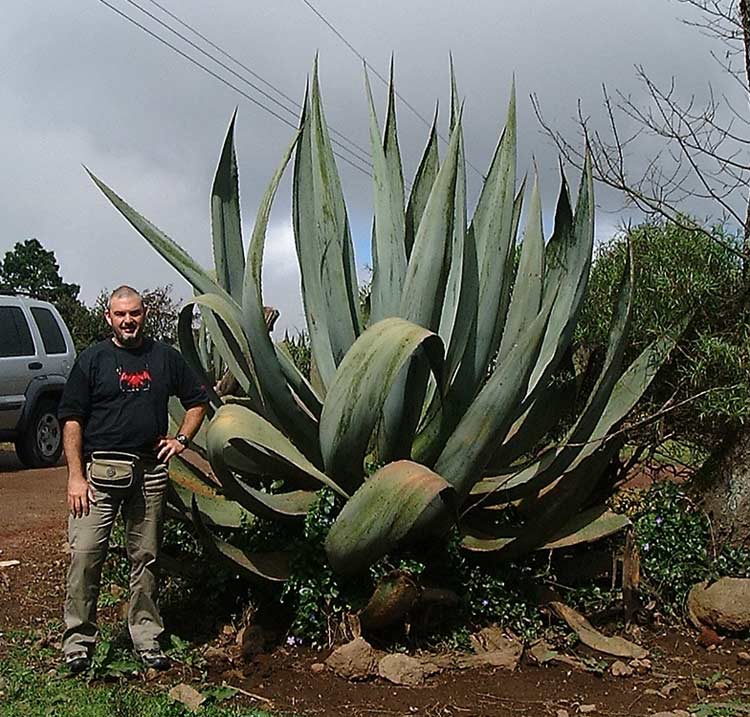
Two years on and it is preparing to flower (and looking rather sorry for itself).
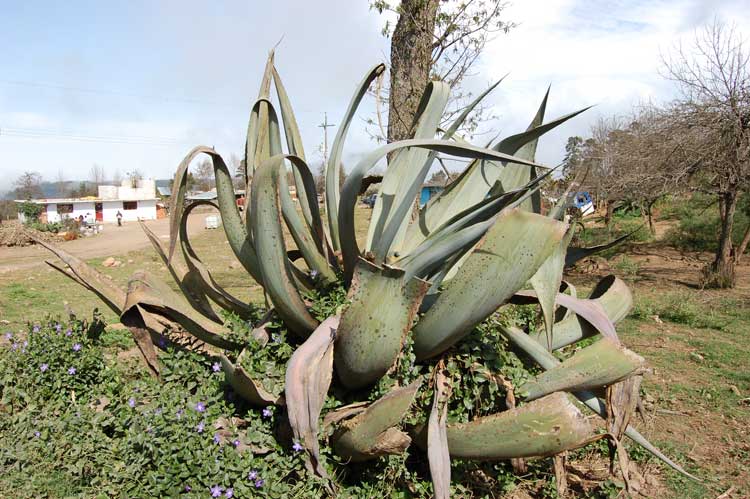
So, that's Agave atrovirens var mirabilis. Fairly consistent looking.
Agave atrovirens
Here are some pictures of Agave atrovirens taken in southern Oaxaca - the mountains around 50miles north of Puerto Angel.
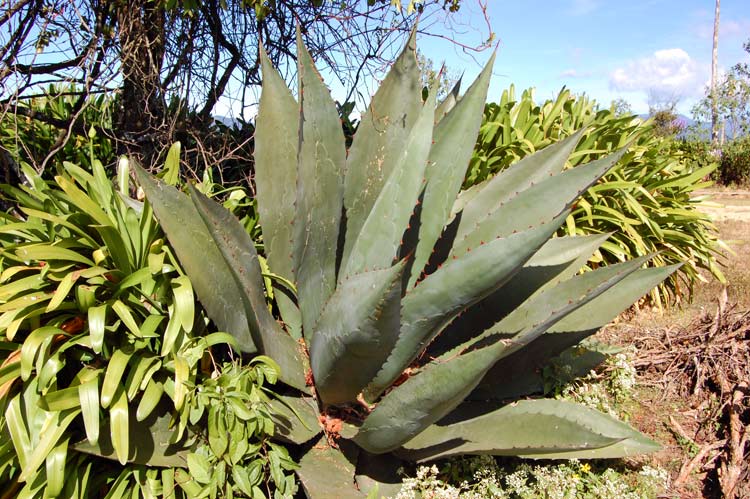
Below - a completely toothless specimen
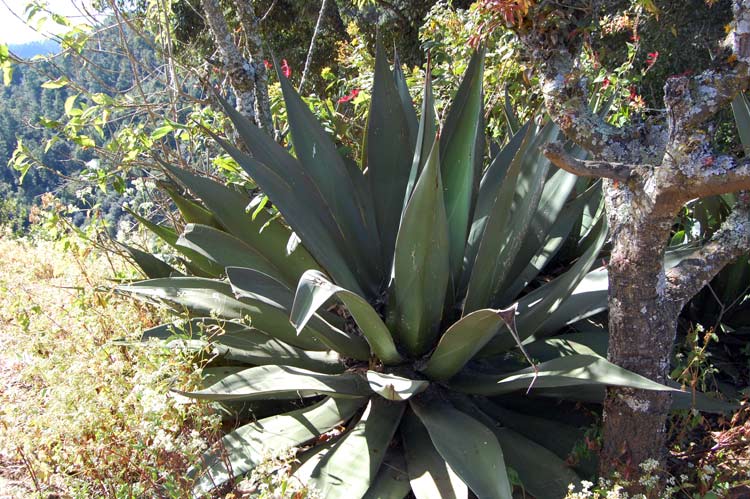
Below big red teeth
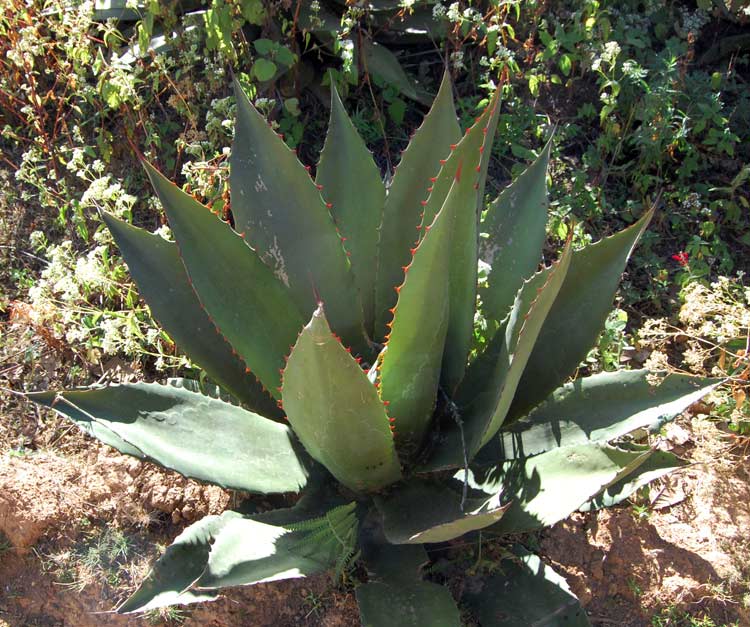
thin leaf specimen resembling salmiana (which isn't around here)
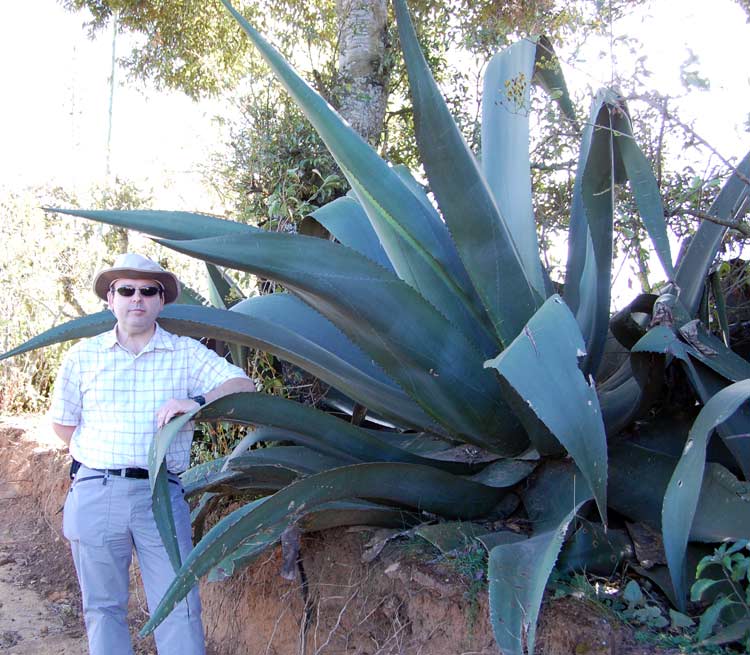
Wide leafed form below
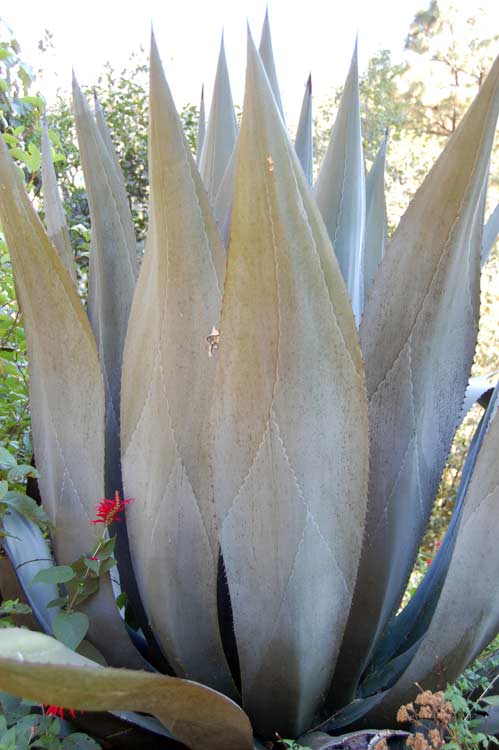
very salmiana-esque plant with glossy green leaves and recurved growth
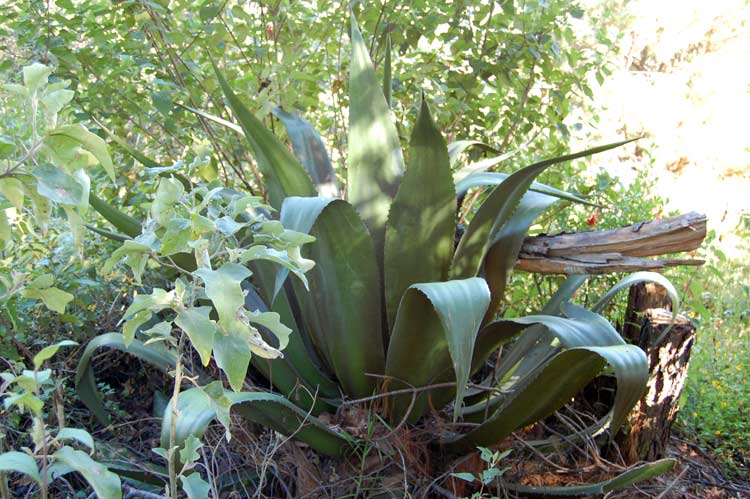
A big one with vast number of leaves
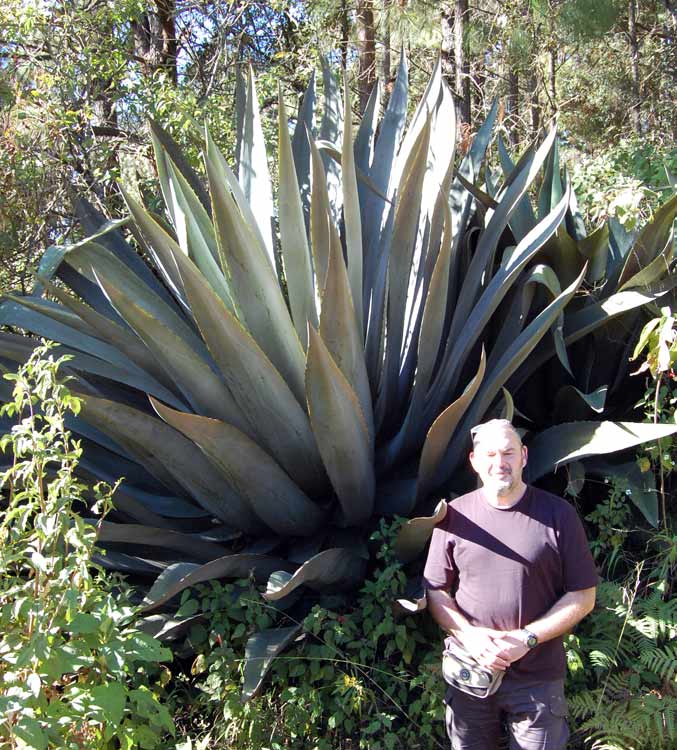
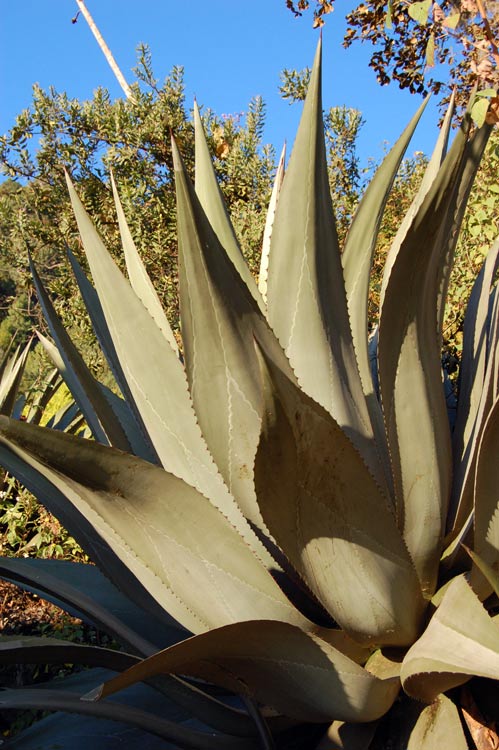
So, quite variable in appearance. Some look quite a lot like the var. mirabilis at Las Vigas (but mainly smaller). Some don't at all, yet are still recogniseable as atrovirens somehow. Plus, usefully, Agave salmiana, with which atrovirens could be easily confused, isn't found cultivated or wild in this part of Mexico. This just scratches the surface, really, as I got fed up keep stopping to take pictures - around each bend was an even better plant! You know how it is.
Cultivated Plants
On to cultivated plants. Not many pictures here, nearly done. Here is my plant that I know is the 'real' var mirabilis as it was a rare sucker taken from an equally rare sucker at the type location. These will occasionally sucker when young - maybe one or two, then that's it until they flower whereupon a handful of babies can be formed around the base of the flower spike.
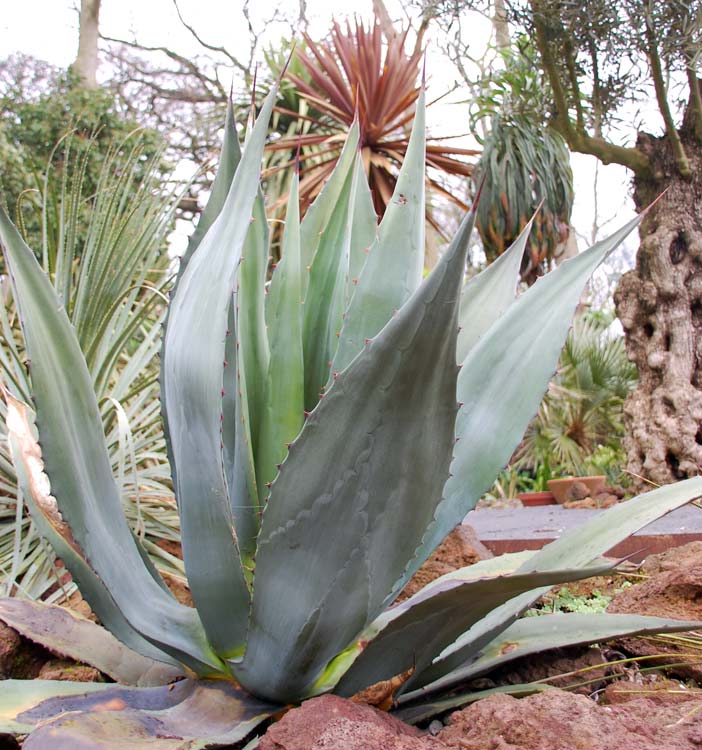
This plant below I bought as Agave atrovirens var mirabilis from a nursery in Holland as a very small plant. It seems to have grown into Agave salmiana - that curve on the leaf is the biggest clue. Took some damage outside this winter.
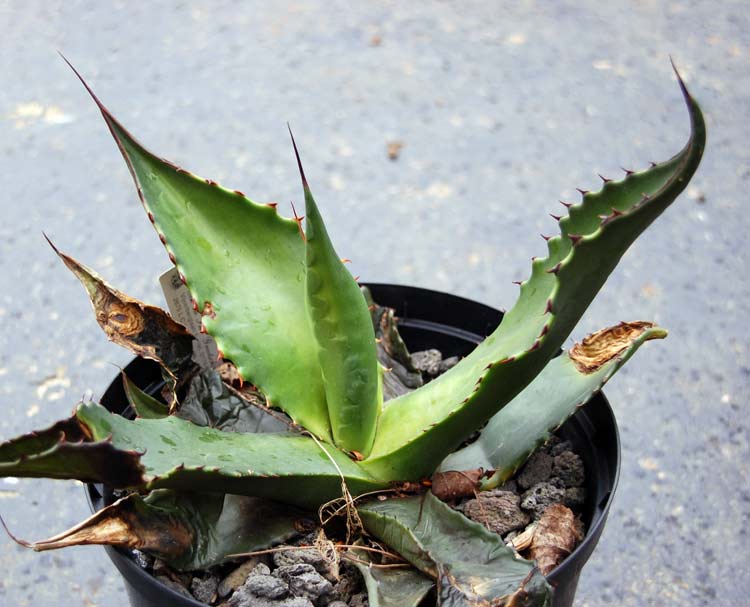
Below - plant raised from seed supplied by Rare Palm Seed. What is it? Looks a bit like Agave salmiana - those teats and glossy leaves. But then some forms of Agave atrovirens (but NOT var mirabilis) have teats and glossy leaves, though this is not the norm from what I have seen.
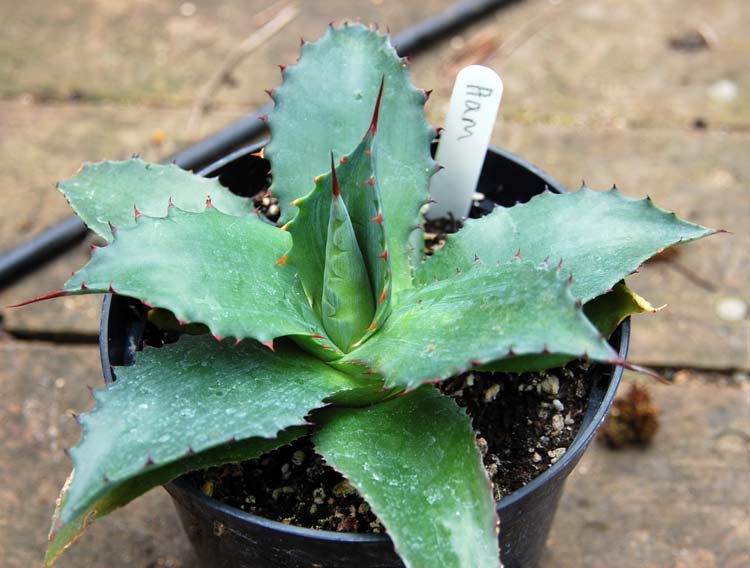
Finally, below, a small plant of Aagve atrovirens grown from seed collected at 2000m in Northern Oaxaca. I am happy that the guy who collected the seed knows what he is looking at. Looks similar to the RPS one above.
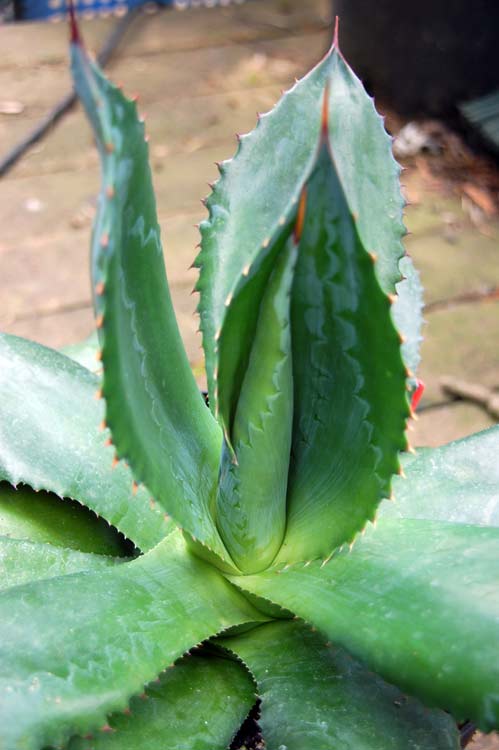
Any conclusions? Well, I would think it unlikely that the RPS plants are Agave atrovirens var mirabilis. More likely they are one of the glossy forms of Agave atrovirens, with an outside chance that they are Agave salmiana. Without knowing exactly where they were collected it is difficult to say with certainty.